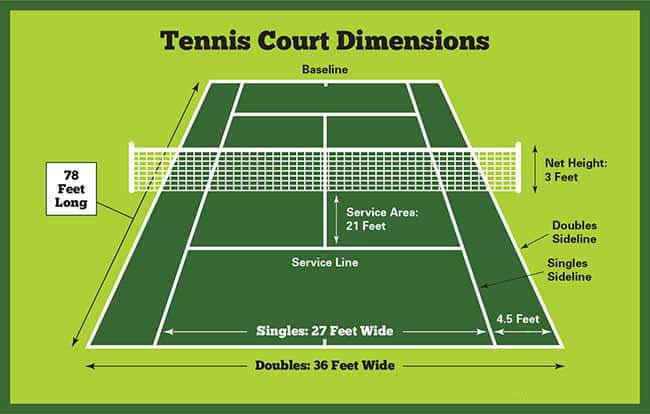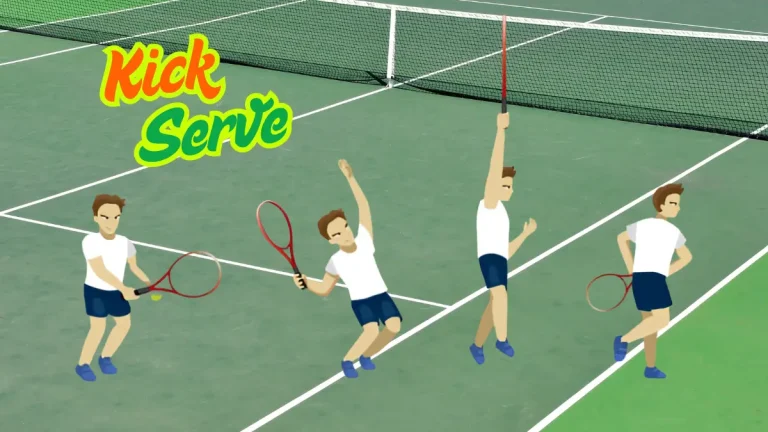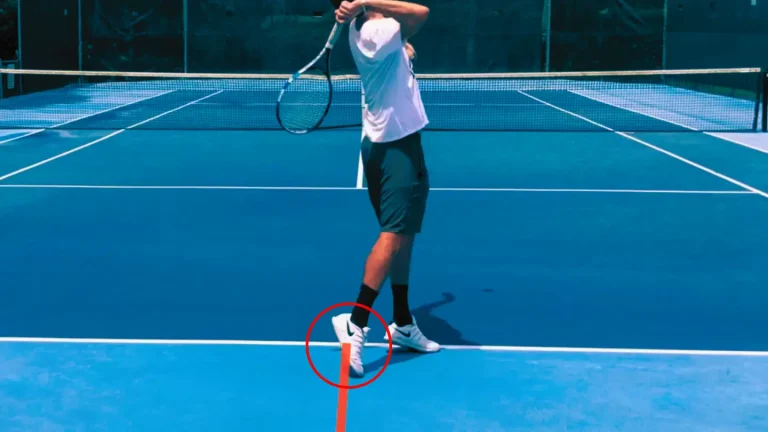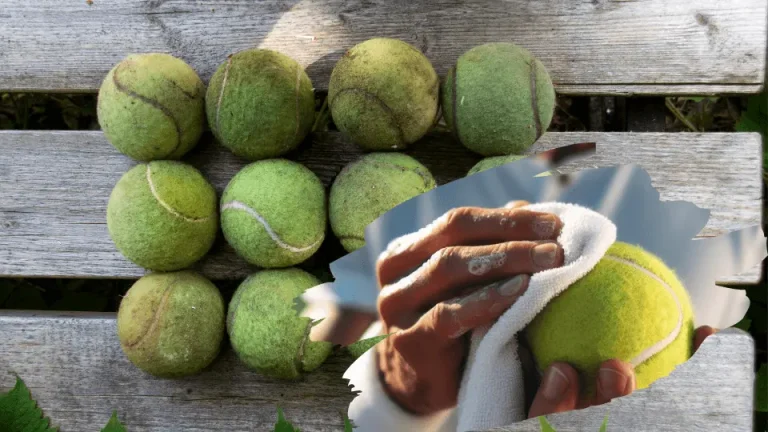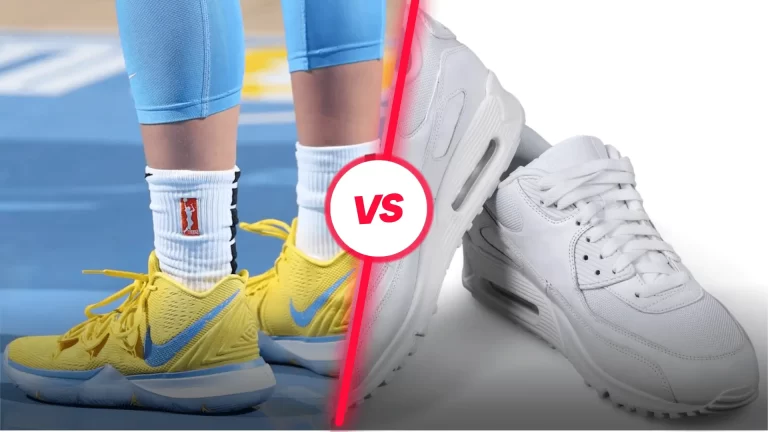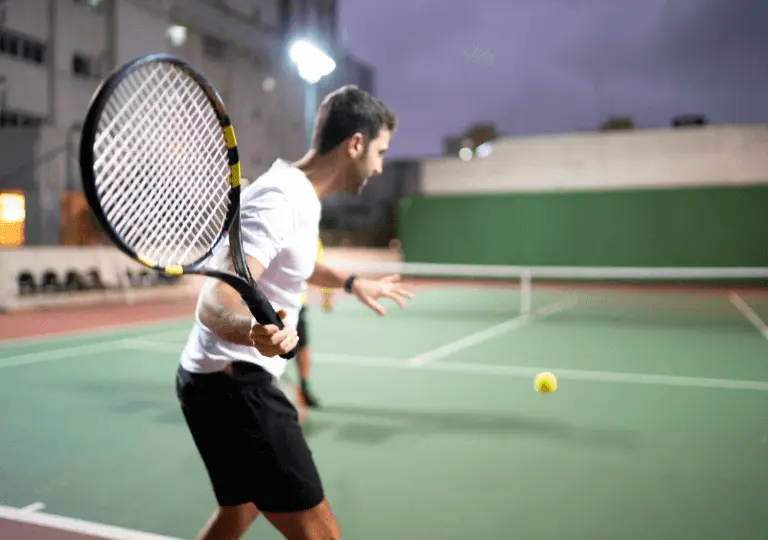Pickleball Court vs. Tennis Court 2025
Enter the world of Pickleball and Tennis, two distinct racquet sports with unique characteristics. Beyond scoring points, these games reveal differences on the court. Pickleball’s compact 44x20ft size contrasts tennis’s 78x36ft. Pickleball courts are also easier and more affordable to build than tennis ones.
There’s more–for example, notable differences in net height and flooring. Let’s explore the differences in their courts, focusing on dimensions, net heights, and the practical aspects that set them apart. Get familiar with each court to understand these racquet sports better.
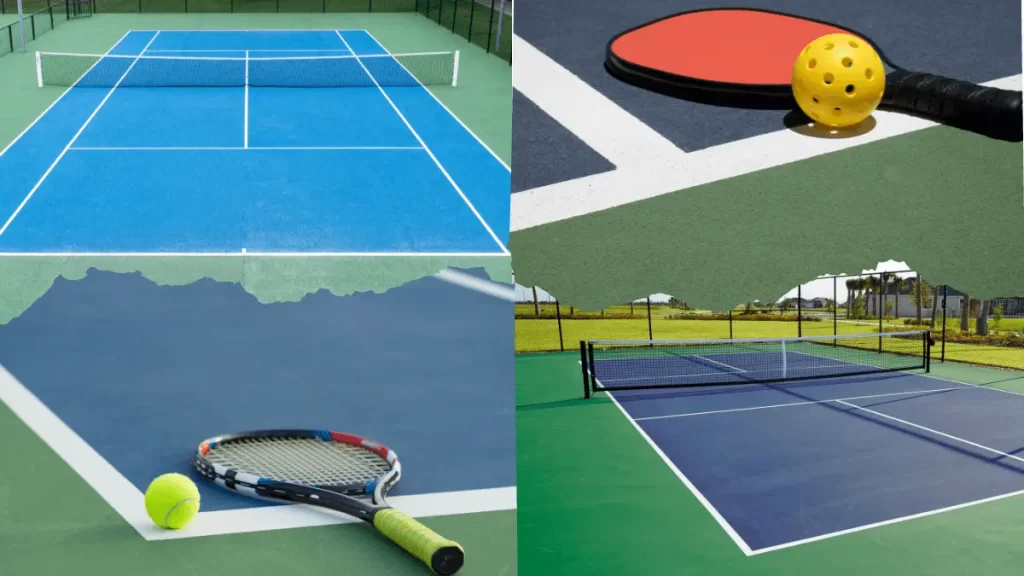
Differences Between Pickleball Court and Tennis Court
Usually, we see obvious size differences between each court–But there’s more than meets the eye. Let’s get into it!
Size
When it comes to the dimensions of pickleball courts and tennis courts, size is the first striking difference. Let’s break it down.
- Tennis court size regulations:
Tennis courts, regulated by the International Tennis Federation, boast a substantial size of 78 x 36 feet for a standard court. However, the width is reduced to 27 feet if it’s designed for singles play.
- Pickleball court dimensions:
In contrast, pickleball courts are notably smaller, measuring 44 x 20 feet. The difference is quite significant, emphasizing the distinct playing spaces for these two sports.
- Singles vs. Doubles:
Tennis: Doubles have a 36-feet width, and singles have 27 feet.
Pickleball: Same court dimensions for both singles and doubles.
- Putting it into Perspective:
Imagine a standard tennis court accommodating up to four pickleball courts side by side. That’s how spacious tennis courts are compared to their pickleball counterparts.
Net Height and Placement
Now, let’s talk about the pickleball net vs tennis net, which separates aces from near misses. Pickleball nets stand at 34 inches in the center and 36 inches at the posts. The net is slightly higher on the tennis court, reaching 36 inches in the center and 42 inches at the posts. A subtle difference like this can impact the game.
Court Painting and Lining
Regarding court markings, both sports share some similarities but also have their uniqueness.
- Volley Zone–The Kitchen
Pickleball has a designated “kitchen,” a 7-foot no-volley zone from the net. Tennis courts, however, don’t have such restrictions.
- Double Sidelines Drama
Tennis courts for doubles boast “doubles sidelines. ” It is located 18 feet from the center mark, making it wider than singles courts. In pickleball, every court has sidelines but no specific doubles sidelines as in Tennis courts.
Flooring and Materials
- Pickleball Court Construction:
Outdoor Pickleball court surfaces usually have a sturdy base made of concrete or asphalt. What makes them unique is the top layer—it’s either covered in polyurethane or a special acrylic material. This top layer matters because it decides how the ball bounces and how you move on the court.
- Surface for tennis courts:
Tennis, on the other hand, is a game of various surfaces, each offering a different feel. There are four main types of tennis court surfaces: clay, hard, grass, and synthetic. Each has its own pros and cons, affecting the speed of play, ball bounce, and player movements.
Pickleball Court vs. Tennis Court Cost
- Starting Up: Pickleball Wins for Affordability
Regarding the cost of setting up a court, pickleball takes the lead. To construct a pickleball court from scratch, the price ranges from $28,000 to $37,500. Overall, it’s quite budget-friendly and requires less area.
- Tennis court installation cost
When it comes to constructing a court, tennis tends to demand more from your wallet. The cost to build a tennis court can range widely, from $25,000 to a whopping $120,000 for a regulation-sized court. That’s a considerable investment compared to the relatively modest expense of setting up a pickleball court.
Choosing Your Court
- Pickleball Court Layout
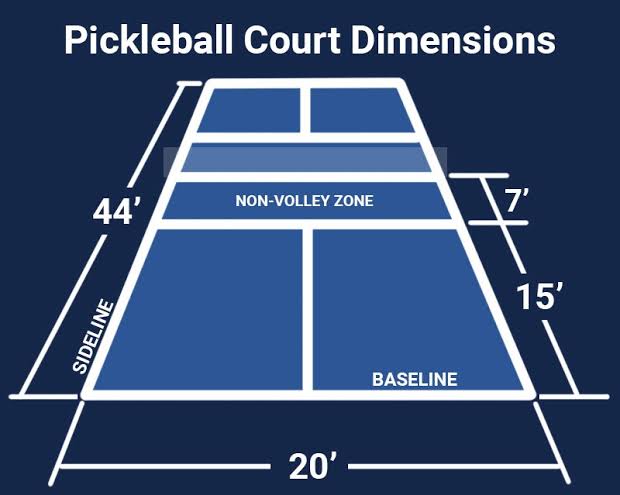
- Tennis Court Layout
Here’s a Simple Comparison between Pickleball and Tennis; it’ll help you decide which sport for you:
| Criteria | Pickleball | Tennis |
|---|---|---|
| Cost and Build Difficulty | More affordable and easier to build | More expensive to build |
| Suitability for Beginners | Good | Not the Best |
| Court Surface | All-weather, durable court surface | Four surface options: clay, hard, grass, synthetic |
| Traction and Impact on Knees | Good traction and Low impact on knees | The impact varies based on the surface type |
| Adaptability for Different Games | Same size for only singles and doubles pickleball | Large enough to convert into two pickleball courts |
Conclusion
In the end, the choice between a Pickleball and a Tennis court is about playing preferences. If you’re on a budget and want a court that’s beginner-friendly with low impact on joints, pickleball might be your go-to. For those seeking diverse playing experiences and willing to invest more, tennis provides various court surface options and adaptability for different games.
Regardless of your choice, remember that every match is played on a court. Set your sport and let the journey on the court continue.
FAQs
Can pickleball be played on a tennis court?
Yes, you can play pickleball on a tennis court, but adjustments are needed for court dimensions and net height. Pickleball courts are typically 20 x 44 feet, while tennis courts are 27 x 78 feet, and the net dimensions differ.
Is it possible to turn a tennis court into a pickleball court?
Yes, you can convert a tennis court into a pickleball court. A pickleball court needs to be at least 30 x 60 feet, which is one-fourth the size of a standard tennis court. However, watch out for angled corners on some tennis courts.
Why do some people prefer pickleball over tennis?
Pickleball’s appeal lies in factors like using a plastic waffle-like ball, which reduces bounce, and more manageable paddles. It’s a good sport for beginners and seniors. People prefer its lightweight equipment and easy rules.


